
Dorstenia foetida Photo by: K.k. Agrawal
It is a strange, odd-looking relative of the fig. The stem is succulent and may be branched or nott, fully leafed out, looks like a miniature Palm Tree. The stem bears conspicuous and prominent round scars of petioles, inflorescences and stipules in a spiral pattern. It is a very variable.
Origin and Habitat: It is native of a vast area, comprising Ethiopia, Somalia, Kenya, Tanzania, Saudi Arabia, Yemen and Oman.
Habitat: Grows in decidous and succulent bushland, open places, and on rock outcrops, altitude 100-2100 m.
Synonyms:
See all synonyms of Dorstenia foetida
Common Names include:
CHINESE (中文): 臭琉桑
Description: Dorstenia foetidaSN|16417]]SN|16417]] is a sub-shrub, stem succulent which may be branched or not. This is a very variable species especially in shape and size of leaves, length of petioles and stipules. Since the various forms are connected by intermediates it is impossible to recognize infraspecific taxa. Usually perennial D. foetida under tropical conditions may grow as an annual or bi-annual.
Stem (caudex): It has a thick, dark green- to mahogany-colored conical trunk, that will grow to 15 centimeters in diameter and 30-40 centimeters in height, older parts often with peeling bark. The stem bears conspicuous and prominent round scars of petioles, inflorescences and stipules in a spiral pattern.
Leaves: Evergreen or caducous, at stems' tips, light green to grayish-green narrowly lanceolate to broadly elliptical (sometime nearly orbicular or linear), 1-15 cm long, 0,5-4,5 cm wide, tip acute to shortly acuminate, or obtuse to rounded. Base attenuate to cuneate or rounded. Margin rather ‘crinkly,’ ondulate and crenate to subentire or dentate. Lateral veins 3-15 pairs, Petiole 0,1-6 cm long, and relatively broad. It has subpersistent to caducous leaf stipules, about 0,5 to 10 mm long.
Flowers: It produces grayish or green (or orange/pinkish), solitary, pedicellate, flower-like structures that are actually fruiting bodies called hypanthodiums. This inflorescence is a weird, horned, tentacle-like disc-shaped structure that has given these plants the common name "Shield Flower." The "Shield" actually consists of a multitude of miniscule flowers. 0, 5-2 cm wide.
Fruits: The seed pods open explosively when ripe and send the seed flying a considerable distance (up to 2 meters) - similar to some Euphorbias.
If you intend to keep the seeds, care must be taken to catch them with a piece of fabric or by other means.
Bibliography: Major references and further lectures
1) Urs Eggli "Illustrated Handbook of Succulent Plants: Dicotyledons" Springer Science & Business Media, 2002
2) Royal Botanic Gardens, Kew "Flora of Tropical East Africa - Moraceae (1989)" Volume 117. CRC Press, 01/Jun/1989
3) Mats Thulin "Flora of Somalia: Angiospermaev (Tiliaceae - Apiaceae)" Royal Botanic Gardens, Kew, 1999
4) "The New Plantsman" Royal Horticultural Society, 1998
5) Sean Hogan "Flora: A Gardener's Encyclopedia" Volume 1 Timber Press, 2003
6) Werner Rauh "The Wonderful World of Succulents: Cultivation and Description of Selected Succulent Plants Other Than Cacti" Smithsonian Institution Press, 1984
7) Anthony G. Miller, Miranda Morris, Susanna Stuart-Smith "Plants of Dhofar: The Southern Region of Oman : Traditional, Economic and Medicinal Uses" Office of the Advisor for Conservation of the Environment, Diwan of Royal Court, 1988
8) Anthony G. Miller, Thomas A. Cope, J. A. Nyberg "Flora of the Arabian Peninsula and Socotra" Volume 1 Edinburgh University Press, 1996
9) James Cullen, Sabina G. Knees, H. Suzanne Cubey "The European Garden Flora Flowering Plants: A Manual for the Identification of Plants Cultivated in Europe, Both Out-of-Doors and Under Glass" Cambridge University Press, 11/Aug/2011
 Dorstenia foetida Photo by: © Plantemania
Dorstenia foetida Photo by: © Plantemania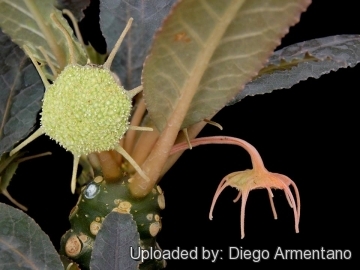 Dorstenia foetida Photo by: Diego Armentano
Dorstenia foetida Photo by: Diego Armentano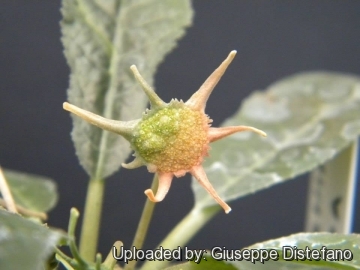 Dorstenia foetida Photo by: Giuseppe Distefano
Dorstenia foetida Photo by: Giuseppe Distefano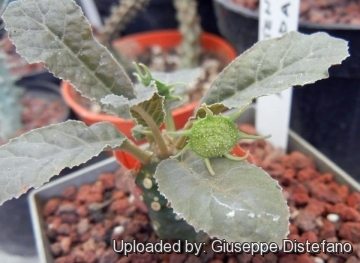 Dorstenia foetida Photo by: Giuseppe Distefano
Dorstenia foetida Photo by: Giuseppe Distefano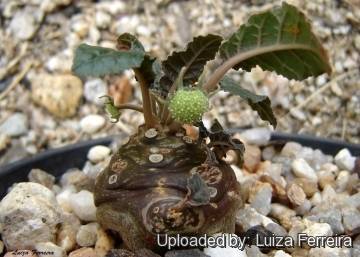 Dorstenia foetida Photo by: Luiza Ferreira
Dorstenia foetida Photo by: Luiza Ferreira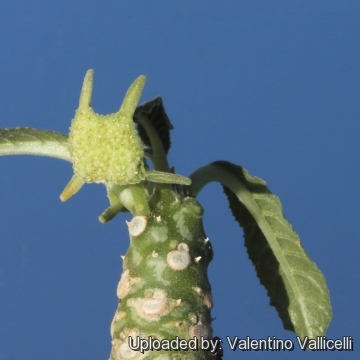 Dorstenia foetida Photo by: Valentino Vallicelli
Dorstenia foetida Photo by: Valentino Vallicelli Dorstenia foetida Photo by: Giuseppe Distefano
Dorstenia foetida Photo by: Giuseppe Distefano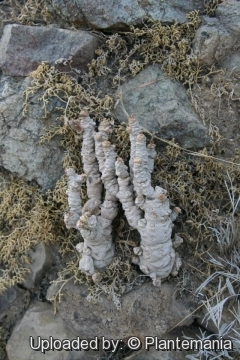 Dorstenia foetida from Haraz,Yemen. Photo by: © Plantemania
Dorstenia foetida from Haraz,Yemen. Photo by: © PlantemaniaCultivation and Propagation: Dorstenia foetidaSN|16417]]SN|16417]] needs bright light or partial to full shade, with warm temperatures and a well-drained soil mix that must not remain soggy for too long. During the growing season, the plants appreciate a fair amount of water but allow the soil to dry slightly between watering, making sure that they never dry out completely. They have to be kept in a rather high air humidity. They are fertilized once during the growing season with a balanced fertilizer diluted to ½ the strength recommended on the label. During the winter months they tend to go at least partially dormant and will exhibit some leaf loss. During this period, they should be given very little water.
Propagation: Dorstenia foetidaSN|16417]]SN|16417]] are usually propagated by seed. Seed germinate readily at 21° C. They can also be propagated by cuttings.
Uses: Though in Oman the tubers of Dorstenia foetidaSN|16417]]SN|16417]] are cooked and eaten. We do not suggest plants for consumption!
Your Photos
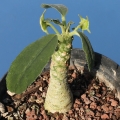
by Valentino Vallicelli



















